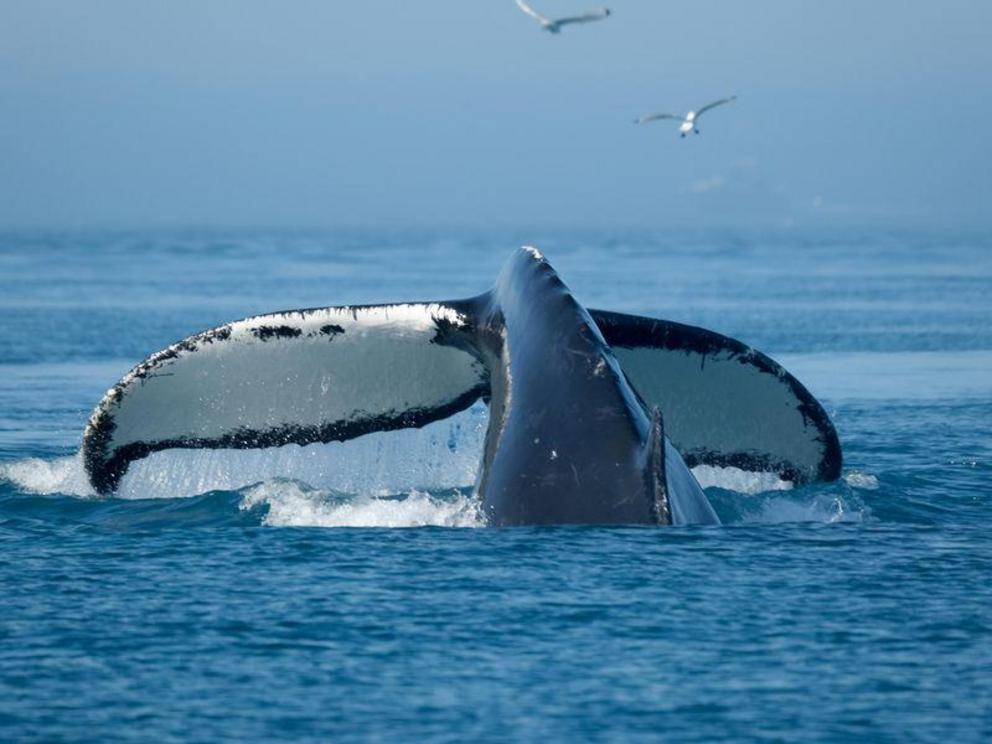Found: a hub where humpback whales share their songs
A new study has found that whales from diverse locations gather at the Kermadec Islands, where they seem to transmit unique ditties
Humpback whales are the great crooners of the deep. Males are known to emit a songs of complex melodies, comprised of moans, cries and chirps, and their choruses can last for hours at a time. Humpback populations also transmit their songs to one another, in a west-to-east direction, so that a ditty might spread thousands of miles across the sea. Now, as Cara Giaimo reports for the New York Times, a new study has identified one location where humpback whales seem to converge to share their songs: the Kermadec Islands, a remote spot off the coast of New Zealand.
Each year, humpback whales spend the summer in cold, northerly waters, then migrate down to tropical breeding spots in winter. And each breeding ground is associated with a unique song, which the males switch up from year to year. (Females don’t appear to sing, though they can make certain vocalizations.) But researchers studying humpback whales in the South Pacific have noticed that males at one breeding ground will sometimes incorporate elements of songs from other breeding grounds—prompting experts to wonder where they were picking up the new tunes.
“The song we hear in whales in New Caledonia this year—next year we’ll hear elements of that song in the whales in Tonga,” Rochelle Constantine, a biology professor at the University of Auckland and co-author of a paper in Royal Society Open Science, tells Giaimo.
Conservation rangers had observed humpback whales converging around the Kermadec Islands, and specifically a landmass known as Raoul Island, in September and October, when the great creatures are making their southward migration. They have to go out of their way to get there, and the study authors “hypothesized that if males do migrate past the Kermadec Islands from multiple wintering grounds during their southward migration … we should see some evidence of the cultural processes, song transmission and/or convergence,” as the researchers note.
So the team recorded whale songs across multiple South Pacific wintering grounds—from Eastern Australia to French Polynesia—and began to transcribe them, looking for distinctive tropes.
“Transcribing the songs certainly was a big job,” lead study author Clare Owen tells Vice’s Becky Ferreira. “When first analyzing the sounds, they seemed so alien but as I spent more time listening to the songs and focused on the details, I started to notice the patterns and it really was like learning a new language.”
Ultimately, the researchers were able to divide the humpback songs into three categories. “Song Type 1” was most frequently heard in the central Pacific (the Cook Islands and French Polynesia), “Song Type 2” was dominant in the west Pacific (New Caledonia, Tonga and Niue), and “Song Type 3” was only heard in eastern Australia.
Next, the team compared the songs from the breeding grounds to vocalizations from 39 humpbacks recorded around the Kermadecs. Most of the whales there were singing Song Type 1 and Song Type 2, suggesting that they had traveled from central and western Pacific. Song Type 3 was not heard at the islands, leading the researchers to assume that none of the whales had traveled from eastern Australia. Intriguingly, one singer was belting out a “hybrid”—themes from both Song Type 1 and Song Type 2. Perhaps, the researchers theorize, he was in the process of switching from one song type to another.
“Hybrid songs are rare,” the study authors write, “and likely short lived, so this hybrid song, with which we have likely captured some part of the process by which singers change their song display from an older to a new song version, suggests that the Kermadecs are a location where song learning occurs.”
Previously, transmission hubs along whales migratory routes had been “elusive” to scientists, according to the study authors. And the Kermadecs may represent just one piece of the puzzle: the research team believes that there are likely other important locations, such as feeding grounds, where humpbacks from diverse locations gather for sing-a-longs.

